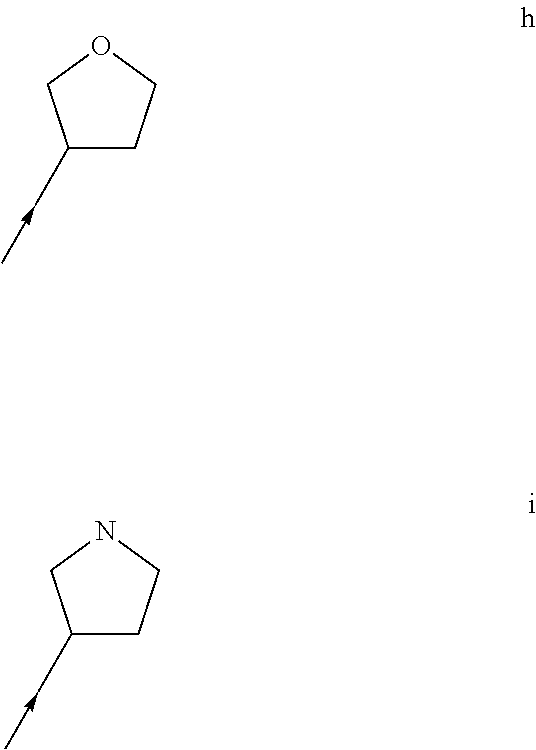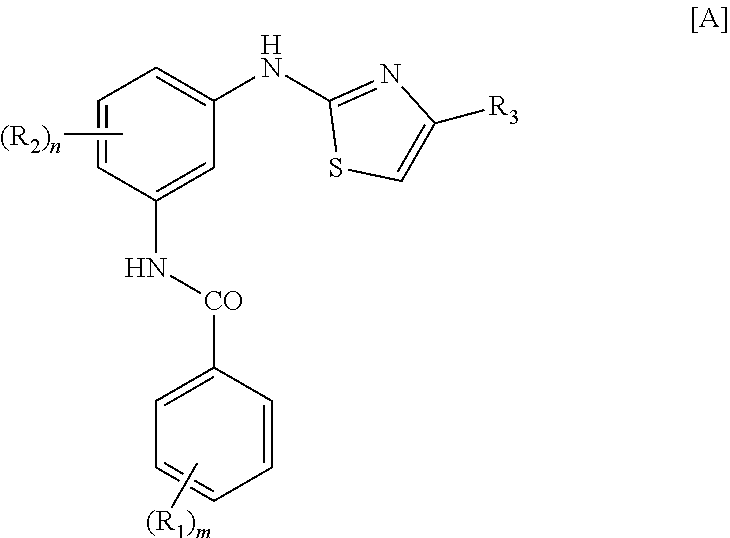Use of masitinib for treatment of an amyotrophic lateral sclerosis patient subpopulation
a technology for amyotrophic lateral sclerosis and masitinib, which is applied in the direction of medical preparations, pharmaceutical delivery mechanisms, nervous disorders, etc., can solve the problems of no treatment available to stop or reverse the progressive course, affecting manual dexterity and gait, and spasticity may develop
- Summary
- Abstract
- Description
- Claims
- Application Information
AI Technical Summary
Benefits of technology
Problems solved by technology
Method used
Image
Examples
example 1
[0334]Study AB10015
[0335]Design:
[0336]Study AB10015 is a prospective, multicenter, randomized, double-blind, placebo-controlled, parallel groups, phase 2 / 3 study to compare the efficacy and safety of masitinib in combination with riluzole versus placebo in combination with riluzole in the treatment of patients suffering from amyotrophic lateral sclerosis (ALS).
[0337]Randomization:
[0338]381 patients were randomized in 3 groups:[0339]Group 1: 127 patients received masitinib at 4.5 mg / kg / day+riluzole[0340]Group 2: 127 patients received masitinib at 3 mg / kg / day+riluzole[0341]Group 3: 127 patients received placebo+riluzole
[0342]Subgroup Analyses (Subpopulations of ALS Patients):
[0343]There are two distinct populations of ALS patients: a subpopulation of “normal progressors” and a subpopulation of “faster progressors”. The targeted population for primary analysis is the subpopulation of “normal progressors”.
[0344]Population of “normal progressors”:
[0345]“Normal progressors” are defined as...
example 2
[0385]Clinical data show that masitinib provides therapeutic benefit to a highly distinct subpopulation of ALS patients. These patients are identified as having non-aggressive or moderately aggressive ALS (“normal progressors”), defined as an ALS patient whose progression of ALSFRS-R score before treatment initiation was less than 1.1 points per month.
[0386]Study AB10015 Interim Analysis
[0387]Methods:
[0388]The study protocol and statistical analysis plan included provision to analyze two subgroups of patients: “normal progressors” (patients whose progression of ALSFRS-R score before randomization is less than 1.1 point per month, referred to also as patients with non-aggressive or moderately aggressive ALS) and “faster progressors” (patients whose progression of ALSFRS-R score before randomization is greater than or equal to 1.1 points per month, referred to also as patients with aggressive ALS).
[0389]In accordance with study AB10015 protocol, an interim analysis was planned to be p...
example 3
[0409]Final analysis of study AB10015 was performed when 100% of the information became available. Clinical data from this final analysis confirmed findings from the AB10015 interim analysis, showing that masitinib provides therapeutic benefit to a highly distinct subpopulation of ALS patients. These patients are identified as being normal progressors, defined as ALS patients whose progression of ALSFRS-R score before treatment initiation was less than 1.1 points per month (comprising non-aggressive and moderately aggressive ALS patients as defined hereinabove).
[0410]Study AB10015 Final Analysis
[0411]Database cutoff was on 16 Mar. 2017. The data presented in this example are in part taken from preliminary analysis and as such represent a close approximation to the final, validated dataset.
[0412]To determine the effect of the administration of masitinib according to progression of ALSFRS-R score in distinct subpopulations of the overall ALS patient population, the following analyses ...
PUM
| Property | Measurement | Unit |
|---|---|---|
| time | aaaaa | aaaaa |
| time | aaaaa | aaaaa |
| weight | aaaaa | aaaaa |
Abstract
Description
Claims
Application Information
 Login to view more
Login to view more - R&D Engineer
- R&D Manager
- IP Professional
- Industry Leading Data Capabilities
- Powerful AI technology
- Patent DNA Extraction
Browse by: Latest US Patents, China's latest patents, Technical Efficacy Thesaurus, Application Domain, Technology Topic.
© 2024 PatSnap. All rights reserved.Legal|Privacy policy|Modern Slavery Act Transparency Statement|Sitemap



